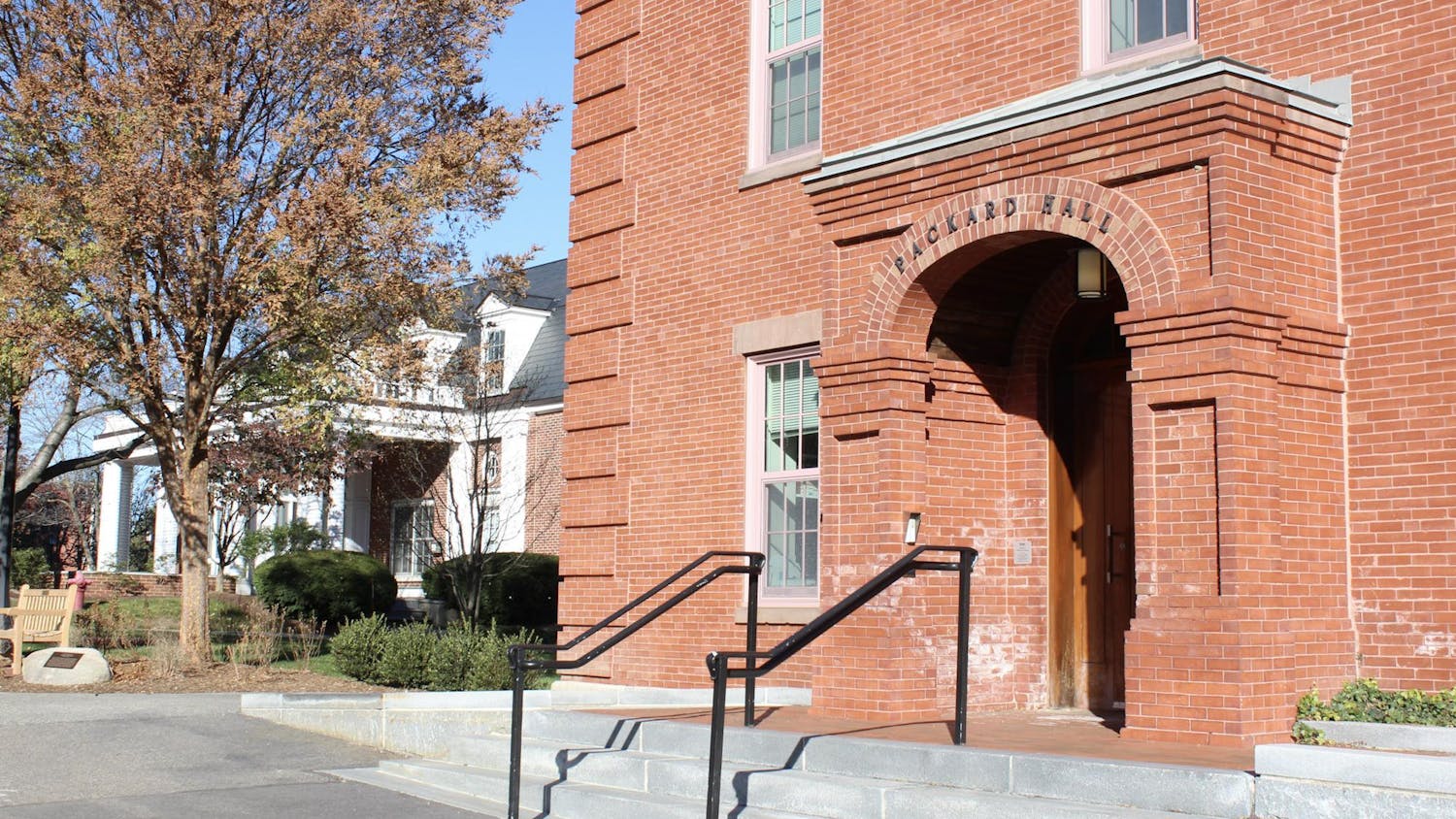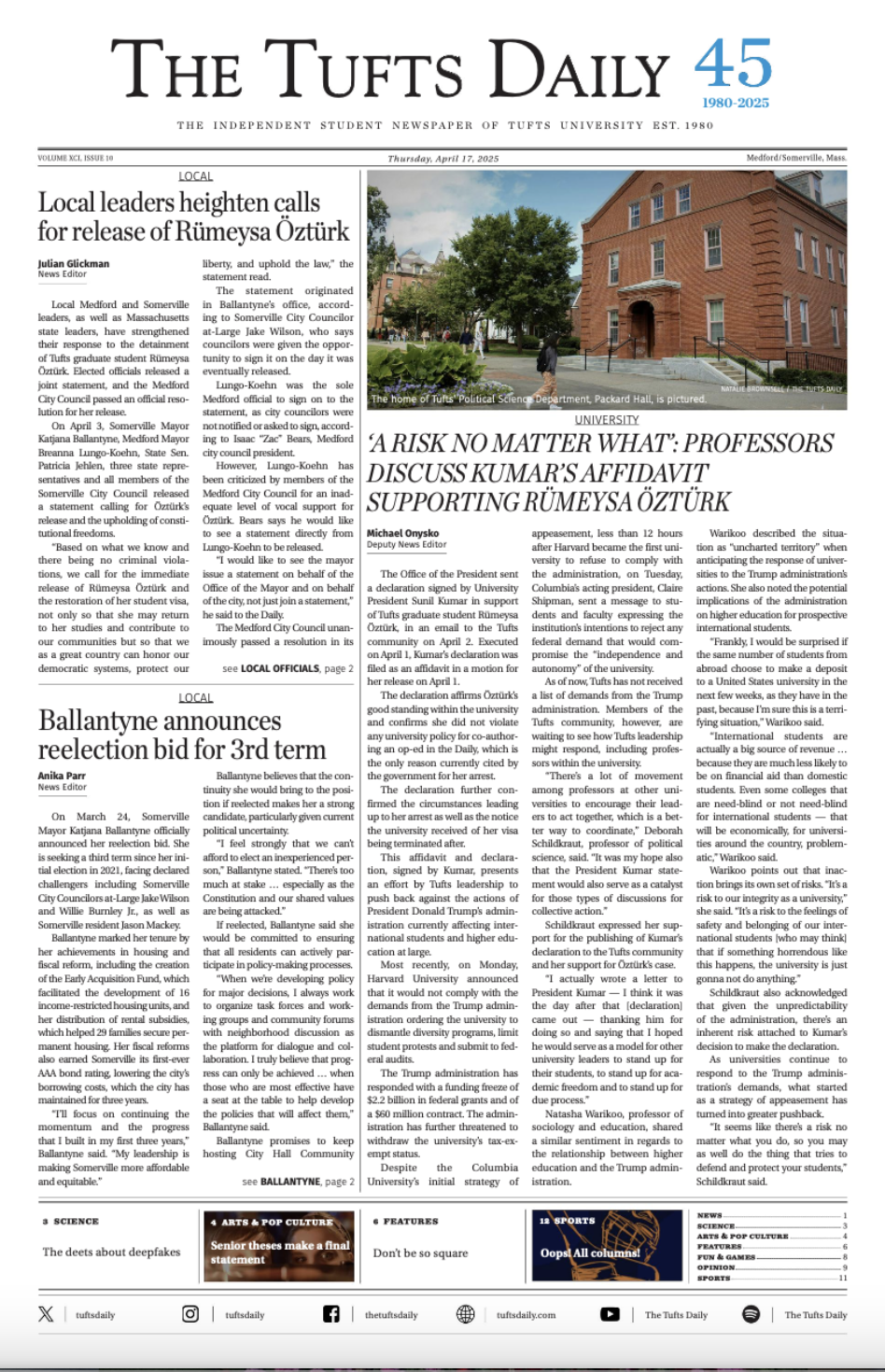Among members of Gen Z, 41 million will be eligible to vote in the 2024 election. According to Alberto Medina, the communications team lead at Tufts’ Center for Information and Research on Civic Learning and Engagement, there is high interest in voting from young people this year.
“Our survey at the very beginning of the cycle found that 57% of youth said they were extremely likely to vote,” Medina said. “Other polls that we’ve looked at and tracked throughout the cycle are similar. … Young people are interested, and they’re paying attention, and they want to participate in this election.”
Medina stressed the importance of the youth vote, since young voters can have a large impact on elections.
“Young people can, and often do, swing elections and have an impact in all kinds of races all across the country,” Medina said.
Some students, like first-year Emilia Ferreira, say they have been anticipating this moment since childhood.
“I've always been looking forward to voting,” Ferreira said. “I was the annoying kid who went into the poll with my mom and watched her vote, so I’m pretty hyped for it.”
Ferreira, who voted by mail in Massachusetts for both the presidential election and local elections, said the process of requesting and filling out her absentee ballot was “super easy.”
However, not every state makes the voting process so simple. While some states like Minnesota and Pennsylvania have made it easier to vote since 2022 through implementing policies like automatic voter registration, others have added restrictions that make the process more difficult. According to a study by CIRCLE, Florida, Nebraska, South Carolina, Ohio and Wyoming have all introduced new, strict photo-ID requirements ahead of the 2024 election.
CIRCLE’s study also found a correlation between youth voter turnout and states that have a vote-by-mail option. In 2022, Colorado, Oregon and Washington were three of the top seven states with the highest youth voter turnout in the 2022 midterm election; all have had vote-by-mail options since 2014 or earlier.
CIRCLE largely focuses on inequities and barriers to youth voting, according to Medina. He explained that the varying registration processes in each state are one major obstacle that young people face.
Seona Maskara, co-chair of JumboVote, says she has observed this among the Tufts students she works with.
“In states where the majority of the process is not online or where special procedures - like notaries - are needed, students have a lot of trouble voting,” Maskara wrote in an electronic message to the Daily.
Other barriers for youth voters include access to educational resources about the process of getting registered, taking time off school or work if their state does not allow absentee voting and they need to go home to cast their ballots and transportation to the polls.
According to Medina, one misconception about youth voters is that they are all college students.
“More than a third of young people don’t have any college experience,” he said. “Those are some of the young people that have among the lowest rates of participation in elections, precisely because they’re often ignored,” he said.
CIRCLE ranks where youth voters are most likely to influence presidential, Senate and house elections across the country on their Youth Electoral Significance Index. Michigan, Wisconsin and Pennsylvania are the three states where youth voters are predicted to have the greatest impact in the presidential race.
According to YESI, Michigan has one of the largest youth voter registration rates in the country and had a 36% youth voter turnout rate, the highest in the country, in 2022. The study states that these figures are largely due to laws Michigan has implemented to make registration easier, including automatic, online and same-day registration.
When it comes to the Senate, Montana, Ohio and Michigan are the states where youth voters are expected to have the largest impact, according to YESI. Texas is also on this list, ranking ninth. In the 2018 midterms, Montana had the second highest youth voter turnout and also offers same-day registration and no-excuse absentee ballots. In Texas, 23% of residents are under the age of 30. Despite no laws in place that make it easier to vote, the state has high youth voter registration rates.
Some young people do not plan to vote in this election. Emma So, a first-year from New York City, said that encountering peers who did not want to vote was a “culture shock.”
“I’m in Philosophy Club and the first meeting was about voting, and there were two graduate students that were like, ‘I’ve never voted in any election. I’m not going to vote in this election,’ just for the idea that either their vote doesn’t matter or they don’t want their vote to change stuff in a negative way,” So said.
Nevertheless, not only are Tufts students eager to cast their ballots, but many are hopeful about Gen Z and their ability to enact change.
First-year Madison Micale said, “People of our generation, I feel like they’re more apt to take a stand against something when they don’t like it.”






